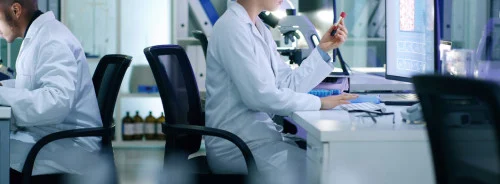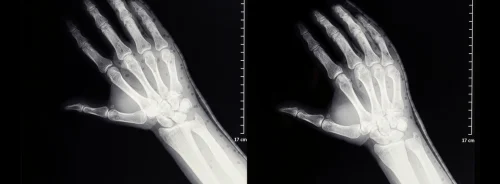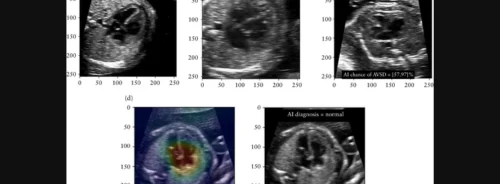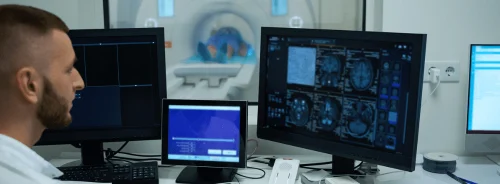HealthManagement, Volume 6 - Issue 5, 2006
Management Issues Crucial to Radiology
Author
Prof. Iain McCall:Opening AddressMore and more, radiologists are realising through gatherings like the recent ‘Management in Radiology’ congress (Budapest, Hungary, October 5 – 7 2006), that they risk the erosion of their profession as an entity if they fail to recognise the importance of good management practices to improve healthcare delivery. As well as many invaluable practical management insights from the wide range of presentations that took place, this was the main subject of discussion on the opening day: where will radiology be in ten years time? The conclusions drawn at the congress were disturbing and thought-provoking.
Prof. Iain McCall: Opening Address
“The annual Management in Radiology congress has proven very successful – international support has played a key role, and we welcome the many colleagues visiting from America and Australia. Initially set up by the late Prof. Ernest Mako, a superb radiologist who sadly died last year, we must offer sincere thanks to Prof. Palko and Prof. Mester from the Local Organising Committee for picking up the baton. Some of the main management challenges in radiology are rising globalisation with the advent of teleradiology, etc. as well as privatisation of healthcare services in the UK which brings growing challenges. MIR allows us to explore these to analyse patterns of healthcare delivery.”
The End of Radiology as an Independent
Specialty
One of the highlights of this year’s congress was a provocative and very timely debate on the future of the radiologist. Opened by Dr Strickland, who argues against the future need for today’s traditional general radiologist, with a move from modality-based focus to sub-specialist organ-based systems, she emphasised that this must be reflected in revised educational structures. Her vision for the future of the radiologist sees multidisciplinary meetings as loci where highly specialised radiologists make up part of a clinical team, which reflects a global knowledge of the whole clinical pathway.
Managing Imaging of the Future
This brought many further questions: How much general radiology education does a subspecialist need? Should there be fasttrack specialist education for those who have made their choice early on? Is there any need for a general radiologist at all? Dr Strickland recommends the medical profession to implement important changes to education – ideally after the two general foundation years, post qualification as a doctor (already implemented in the UK), junior doctors choose an organ system which they specialise in for five years. One of the subspecialty disciplines within each organ system will match that of the imager. The advantages are streamlined patient service, reduced waiting lists, highly specialised equipment and expertise. Dr Strickland acknowledges that this shift may come with costs: a sub-specialist imager may miss a diagnosis related to a different organ system that a general radiologist would not – and it also brings the loss of radiology as a cohesive discipline. Nevertheless, she argues that the benefits for the majority of patients will far outweigh the occasional missed diagnosis.Strickland predicts this inevitable shift will happen in the next ten years, in which radiology as a profession will become fragmented into subspecialist imagers making up part of a clinical organ/body system specialised team.
Fighting Fragmentation of the Profession
Prof. Philip Gishen, in contrast, objects strongly to the ‘giving away of the profession of radiology’. States Gishen, ‘In the case of the UK, radiologists traditionally tend to be on a fixed salary, thus there is not such pressure on them to perform in comparison to radiologists operating on a payment by unit or payment by report system. This has the effect of removing the urgency with regards to protecting the role of the radiologist, who is paid the same whether some of the roles and responsibilities are moved to other specialists, e.g. passing reporting to the radiographers. Clearly the general radiologist still has a very valuable role to play, for example spotting mistakes and having a wider understanding of the patient’s case history’.
A quick count of raised hands by Prof. McCall revealed that few in the audience believed the profession of radiology will still be integrated in the next ten years. The consensus was that the profession will evolve into a more specialised service. This raises the important questions: Will clinicians end up doing their own imaging? Should radiologists get more involved in primary care, dealing with the patient as a clinician or distanced as a service provider? As Prof. Andras Palko says, ‘We live in interesting times’.
Future Congresses and Workshops
As of 2007, the administrative organisation of the annual MIR congress is being transferred to the central ESR office in Vienna under the guidance of Peter Baierl. Henrik Silber will organise the next meeting under new incoming MIR Chair, Dr. Nicola Strickland. Next year’s MIR congress will take place in Oxford, UK, 10 – 13 October 2007, and will no doubt attract even more exciting debate and exchange of knowledge.
As part of its efforts to raise awareness of management issues, MIR is organising its annual workshop on ‘The Art of Leadership’ to take place in January 3 – 6 2007, in Gstaad, Switzerland. This course, which will be led by coaches Tony Poots (Director, Global Integration, UK) and Gerhard Pohl (GP Training and Coaching), will cover such issues as:
• Prioritisation
• Managing time
• Coping with stress
• Saying no
• Work/life balance




